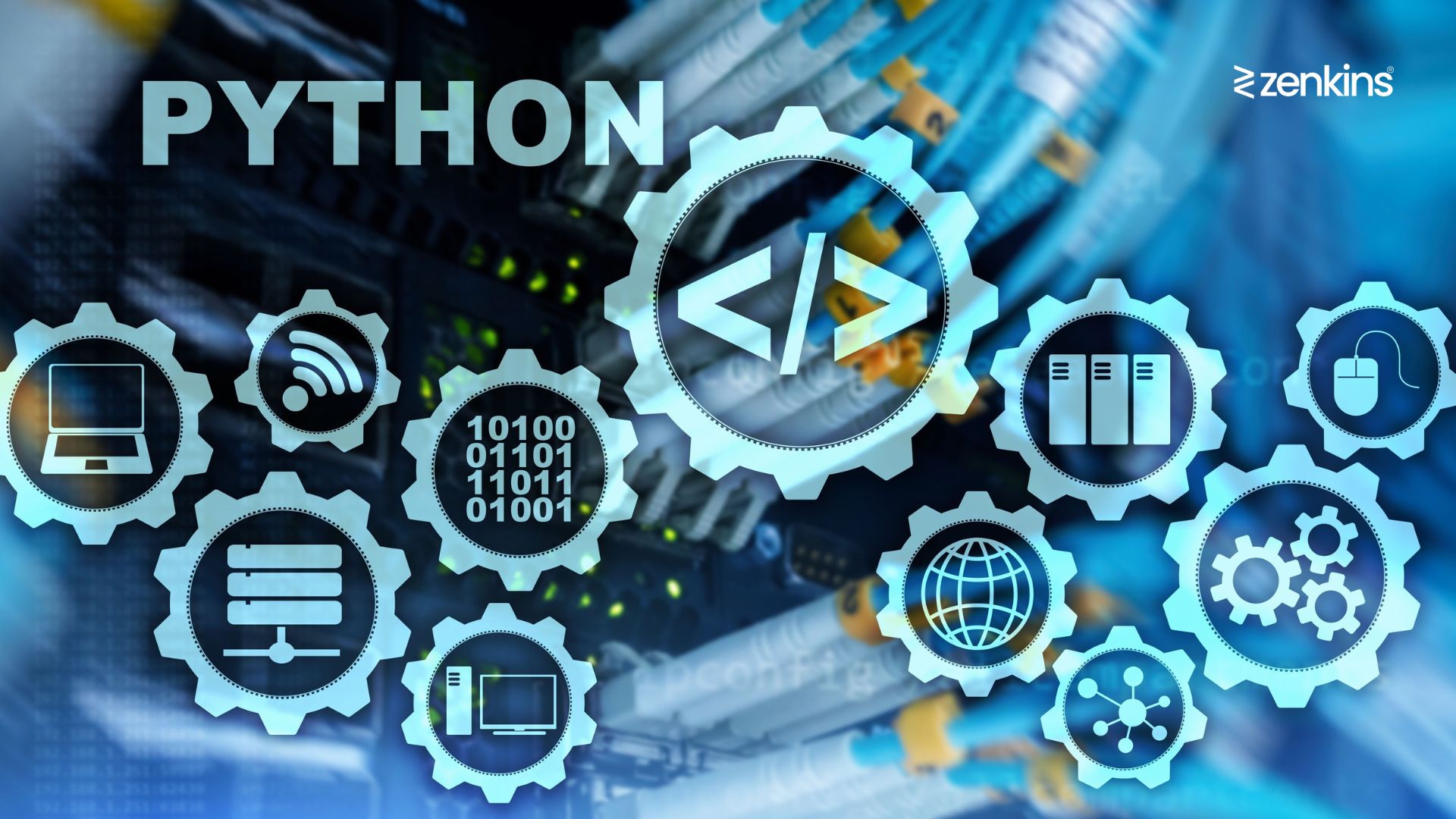The Evolution of Programming Languages: From Legacy to Modern Software Development
Table of Contents
Legacy programming languages have played a crucial role in software development over the years. However, with rapidly evolving technology and changing demands of modern software development, there has been a paradigm shift towards the adoption of more advanced programming languages and methodologies. This article explores the evolution of programming languages from legacy to modern software development, examining the historical context, key milestones, challenges faced by legacy languages, the emergence of modern programming paradigms, advantages of modern software development approaches, and the impact of these changes on the industry. By delving into this evolution, we gain insights into the path that programming languages have taken and the potential future directions for software development.
1. Introduction: Defining Legacy Programming Languages and Modern Software Development
1.1 Legacy Programming Languages
Legacy programming languages are like the grandparents of the coding world. They were once cutting-edge and paved the way for software development as we know it today. But let’s face it, they’re a bit outdated now. You know, like your grandpa’s fashion sense or your grandma’s taste in music.
1.2 Modern Software Development
Modern software development, on the other hand, is like the fresh-faced teenager of programming. It’s all about agility, efficiency, and staying on top of the latest trends. Think of it as the TikTok of coding – quick, snappy, and constantly evolving.
2. The Historical Context: Pioneering Programming Languages and their Limitations
2.1 Early Programming Languages and their Features
Back in the day, programming languages were simpler than picking an outfit for a school dance. They were all about giving commands to the computer in its own language – binary. But then came along languages like Fortran and COBOL, which made coding a little less like deciphering an alien language and a little more like talking to your best friend.
2.2 Limitations of Early Programming Languages
But let’s not sugarcoat it – those early programming languages had their fair share of limitations. They were clunky, lacked flexibility, and were about as user-friendly as a Rubik’s Cube with missing pieces. It was like trying to fit a square peg in a round hole – frustrating and sometimes downright impossible.
3. Evolutionary Milestones: Key Transitions in Programming Language Design
3.1 First-Generation Programming Languages
First-generation programming languages were all about machine code – the deepest dive into the computer’s brain you could get. It was like getting a tattoo without any design or meaning – painful and not very practical.
3.2 Second-Generation Programming Languages
Second-generation languages, such as assembly languages, were a step up from the wild west of machine code. They introduced a level of abstraction, making coding a bit less like pulling teeth and more like putting together a puzzle. Still not exactly a walk in the park, but progress is progress.
3.3 Third-Generation Programming Languages
Third-generation languages, like C and Pascal, finally brought some ease and clarity to programming. They were like receiving a beautifully wrapped gift instead of a plain, old brown box. These languages provided powerful tools and features, making coding more efficient and enjoyable.
3.4 Fourth-Generation Programming Languages
Fourth-generation languages were the cool kids of the programming world. With their high-level abstractions and focus on productivity, they were like using a magic wand – you could achieve incredible things with minimal effort. It was like having a personal assistant who could whip up code like a master chef.
3.5 Fifth-Generation Programming Languages
Fifth-generation languages are still a work in progress, like a teenager trying to figure out their place in the world. They focus on artificial intelligence and natural language processing, aiming to make coding as easy as ordering pizza with your voice. It’s like having a personal AI sidekick who knows exactly what you need and delivers it with a smirk.
4. Challenges and Limitations of Legacy Programming Languages
4.1 Lack of Abstraction and Productivity
Legacy programming languages often suffer from a lack of abstraction, making even the simplest tasks feel like wrestling with a greased pig. You spend more time navigating the nitty-gritty details than actually bringing your brilliant ideas to life. It’s like trying to bake a cake without measuring cups or an oven – messy and frustrating.
4.2 Security Vulnerabilities
Legacy programming languages can be as secure as a house with no locks – not very. They often lack built-in security features, leaving you vulnerable to all sorts of cyber shenanigans. It’s like leaving your front door wide open and hoping nobody walks in with muddy shoes and bad intentions.
4.3 Scalability and Performance Issues
Legacy programming languages can sometimes feel as slow as a sloth on a hot summer day. They struggle to keep up with the demands of modern software development, like trying to jog in flip flops. It’s like waiting for a dial-up internet connection to load a high-definition movie – painfully slow and oh-so-frustrating.
5. The Paradigm Shift: Introducing Modern Programming Languages and Concepts
5.1 Object-Oriented Programming (OOP)
When it comes to programming, the 90s were all about that OOP life. Object-Oriented Programming (OOP) revolutionized software development by organizing code around objects that encapsulate data and behavior. It introduced concepts like classes, inheritance, and polymorphism, which made code more modular, reusable, and maintainable. OOP languages like Java and C++ became the cool kids on the block, taking the programming world by storm.
5.2 Functional Programming (FP)
But the cool kids couldn’t hog all the limelight forever. Enter Functional Programming (FP) in the early 2000s, bringing a fresh approach to software development. FP focuses on writing code in a declarative style, treating computation as the evaluation of mathematical functions. This paradigm emphasizes immutability, higher-order functions, and pure, side-effect-free code. Languages like Haskell and Scala gained popularity, enticing developers with their elegance and expressive power.
5.3 Declarative Programming
In the quest for simplicity and readability, Declarative Programming emerged as another modern programming paradigm. Declarative languages, such as SQL and Prolog, provide a higher-level abstraction that allows developers to express what they want to achieve, rather than how to achieve it. This approach separates the logic from the implementation details, making code more concise and easier to understand. Declaring intentions rather than manually instructing every step? Count us in!
6. Advantages and Innovations of Modern Software Development Approaches
6.1 Increased Productivity and Maintainability
Modern programming languages and paradigms have paved the way for increased productivity and maintainability. With OOP, code can be organized into reusable and modular components, reducing duplication and making codebases easier to manage. FP promotes immutability and pure functions, reducing the chance of bugs and making code more predictable. Declarative programming simplifies complex systems, making them easier to reason about and maintain in the long run.
6.2 Enhanced Code Reusability and Modularity
Gone are the days of reinventing the wheel with every new software project. Modern programming approaches promote code reusability and modularity, allowing developers to build upon existing libraries and frameworks. OOP’s focus on encapsulation and inheritance enables the creation of reusable components, fostering efficient code sharing. FP’s emphasis on higher-order functions allows for the creation of generic algorithms that can be applied to various data types. This means less time writing boilerplate code and more time sipping coffee.
6.3 Improved Error Handling and Debugging
Nobody likes dealing with runtime errors or spending hours debugging code (except maybe masochists). Luckily, modern software development approaches have introduced better error handling and debugging mechanisms. OOP’s encapsulation and exception handling provide a structured way to handle errors and gracefully recover from failures. FP’s emphasis on immutability and declarative programming’s focus on logic separation help reduce bugs and facilitate easier debugging. So, you can catch those bugs before they ruin your day.
7. Impact of Modern Programming Languages on Industry and Technology
7.1 Adoption and Popularity of Modern Programming Languages
Modern programming languages, with their innovative paradigms and concepts, have seen widespread adoption and popularity. Java, embracing OOP, became the go-to language for enterprise software development. FP languages like JavaScript and Python gained massive popularity, finding use in web development and data science. Declarative languages like SQL became essential for database management. These languages have become the bread and butter for programmers worldwide, shaping the way we build software.
7.2 Influence on Software Development Practices and Methodologies
Modern programming languages haven’t just changed the way we write code; they’ve also influenced software development practices and methodologies. Agile and Scrum methodologies, with their iterative and collaborative approach, align well with OOP and modular development. Functional programming’s emphasis on immutability and pure functions has spurred the rise of concurrent and parallel programming techniques. Declarative programming’s separation of concerns has influenced the adoption of microservices architectures. These languages have brought new ways of thinking and working to the table.
7.3 Disruptive Technologies and Trends in Modern Software Development
Modern programming languages have given rise to disruptive technologies and trends that have reshaped the software development landscape. From artificial intelligence and machine learning to cloud computing and big data, these advancements have leveraged the power of OOP, FP, and declarative programming. The rise of serverless computing, containerization, and DevOps practices has also been influenced by the versatility and scalability of modern languages. The future of software development is being shaped by these technologies, promising exciting possibilities.
8. Conclusion: The Future of Programming Languages and Software Development
As we gaze into the crystal ball, it’s clear that programming languages will continue to evolve and adapt to the ever-changing needs of the software development industry. The future holds new paradigms, languages, and tools that will push the boundaries of what we thought was possible. Whether it’s quantum computing, augmented reality, or something we can’t even imagine yet, one thing is certain: Programming will continue to be an exhilarating journey of discovery and innovation. So let’s strap on our coding boots and embrace the exciting future that awaits us!8. Conclusion: The Future of Programming Languages and Software Development
As we reflect on the evolution of programming languages from legacy to modern software development, it becomes evident that the landscape of software development continues to transform at an unprecedented pace. The advancements in programming languages and methodologies have brought significant benefits, including increased productivity, improved code maintainability, and enhanced software quality. Looking ahead, the future of programming languages and software development holds great promise.
With emerging technologies such as artificial intelligence, machine learning, and quantum computing, we can expect further innovations and new programming paradigms to address the challenges of tomorrow. By staying adaptable and embracing the changes, developers can continue to drive the evolution of programming languages and shape the future of software development.
So, there you have it – the journey from legacy to modern software development, from grandpa’s coding days to the snappy, ever-evolving world of today. It’s been quite a ride, hasn’t it? Let’s raise a toast to progress, innovation, and never settling for outdated programming languages. Cheers!
FAQ
What are legacy programming languages?
Legacy programming languages refer to programming languages that were developed and widely used in the earlier stages of software development. These languages may have certain limitations, such as lack of modern programming paradigms, limited support for advanced features, or difficulty in adapting to new technologies. Despite their limitations, legacy languages have formed the foundation for modern software development and paved the way for newer, more advanced programming languages.
How have modern programming languages impacted software development?
Modern programming languages have transformed software development by introducing new concepts and paradigms. For example, object-oriented programming (OOP) brought about a shift in how software is structured and organized, promoting code reusability and modular design. Functional programming (FP) introduced a different approach to problem-solving, focusing on immutability and pure functions. These modern languages have increased productivity, improved code maintainability, and provided developers with more tools and frameworks to create robust and scalable software systems.
What are the advantages of adopting modern software development approaches?
Modern software development approaches offer numerous advantages over traditional methods. These include increased productivity through the use of high-level and expressive programming languages, improved code quality through built-in error handling and debugging features, enhanced collaboration through version control systems and agile methodologies, and greater scalability and performance through optimized frameworks and libraries. Additionally, modern approaches emphasize code modularity, reusability, and testability, leading to more maintainable and adaptable software systems.
What does the future hold for programming languages and software development?
The future of programming languages and software development looks promising. With the emergence of disruptive technologies such as artificial intelligence, machine learning, and quantum computing, new programming languages and paradigms are likely to evolve to meet the demands of these domains. We can anticipate languages that enable seamless integration of AI algorithms, support for distributed computing, and improved security features. Furthermore, as software development becomes more interdisciplinary and interconnected, the industry may witness greater emphasis on domain-specific languages and innovative approaches that bridge the gap between programming and other fields.




